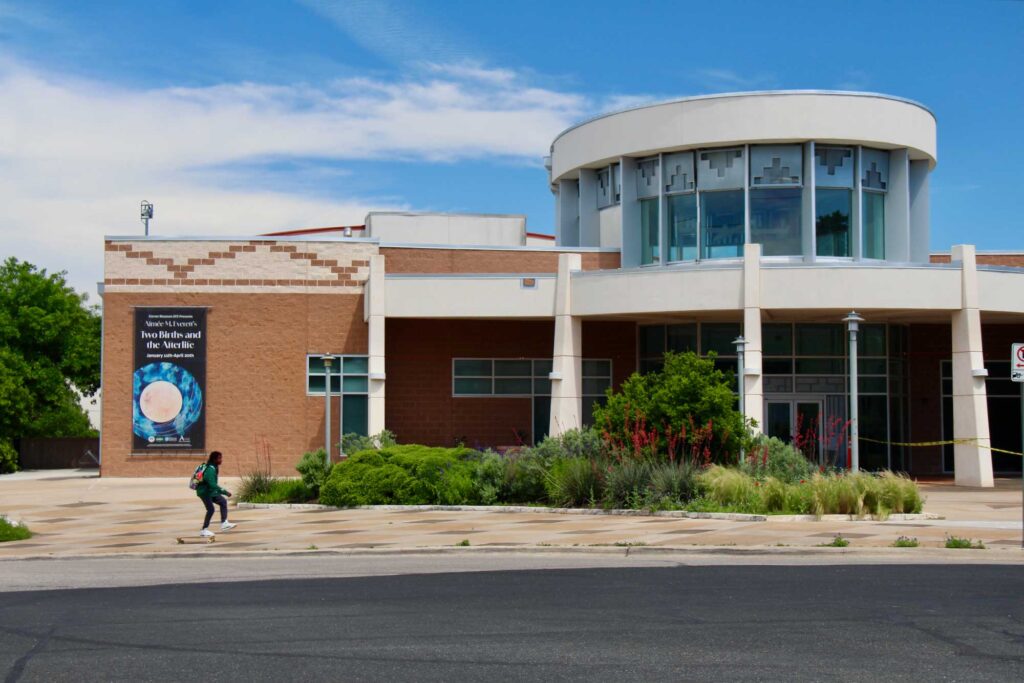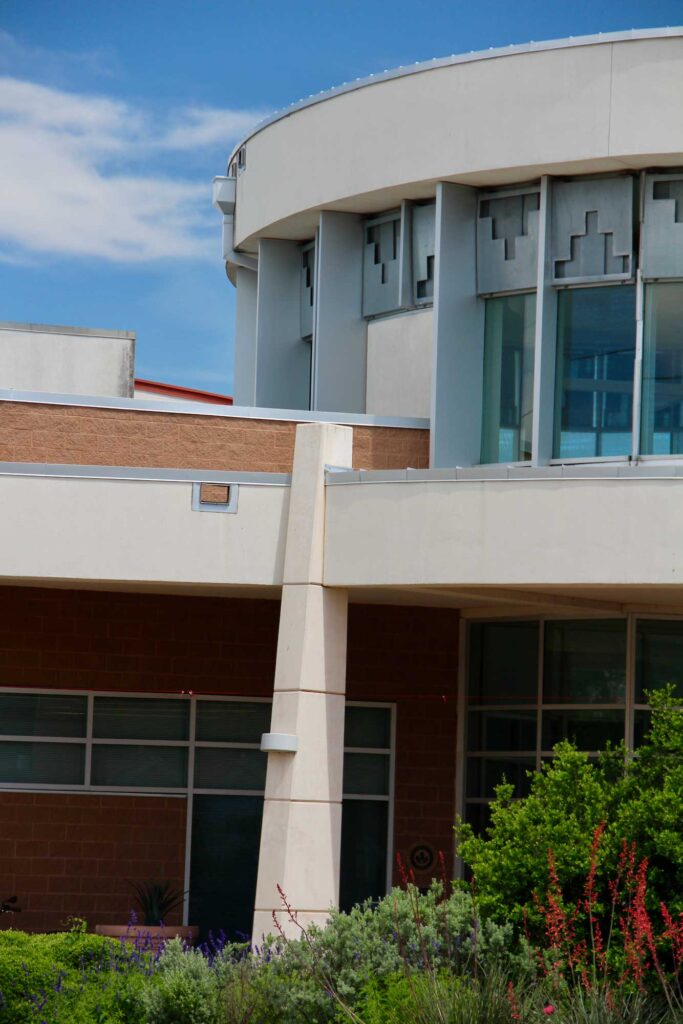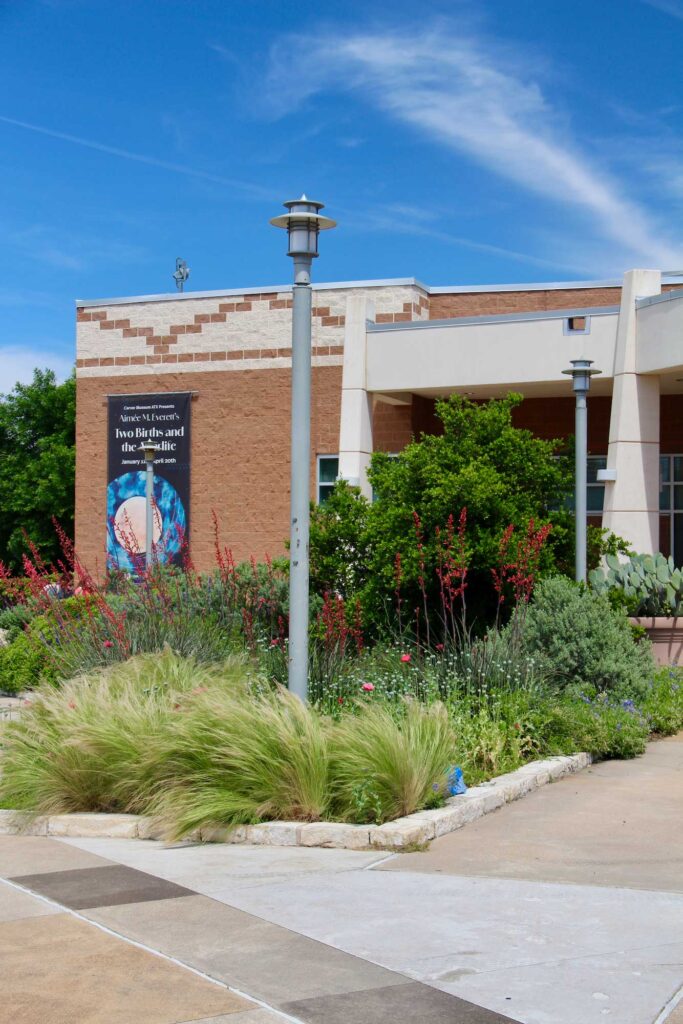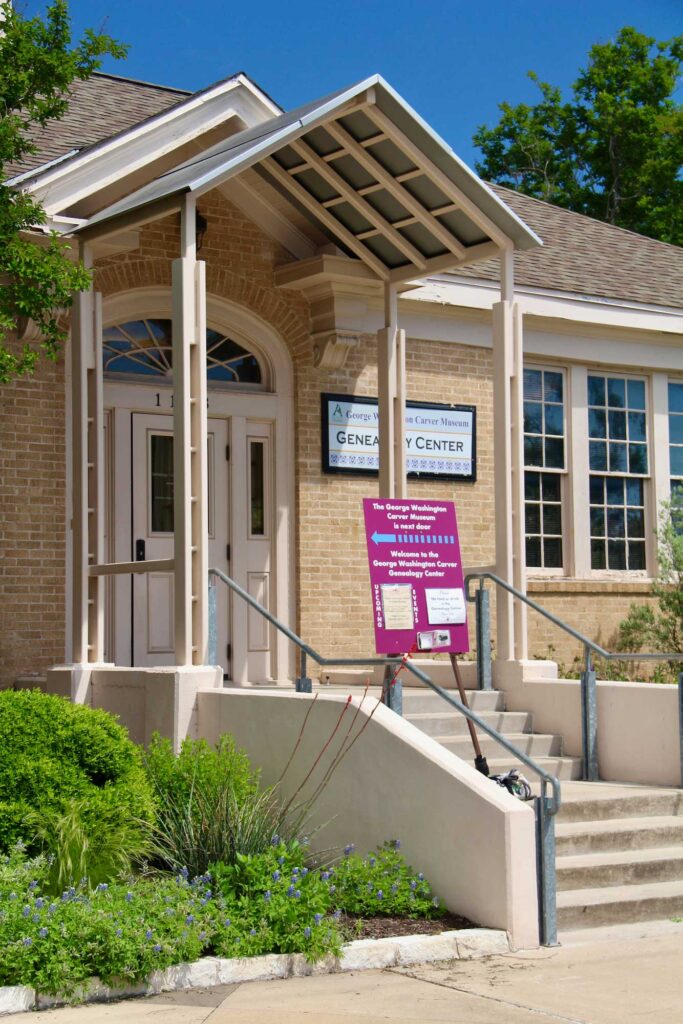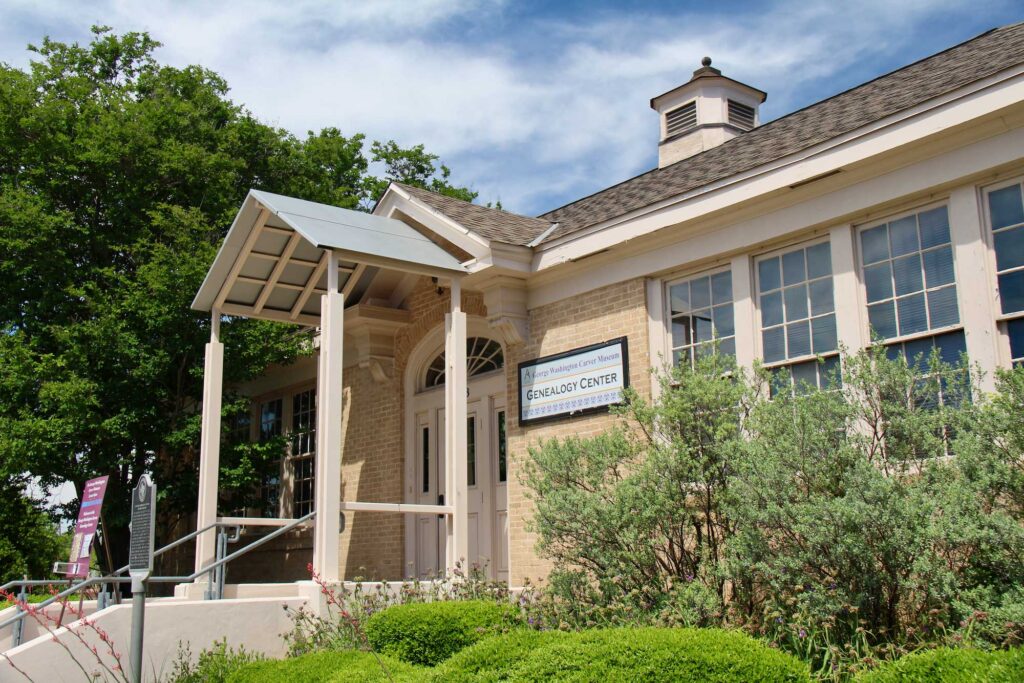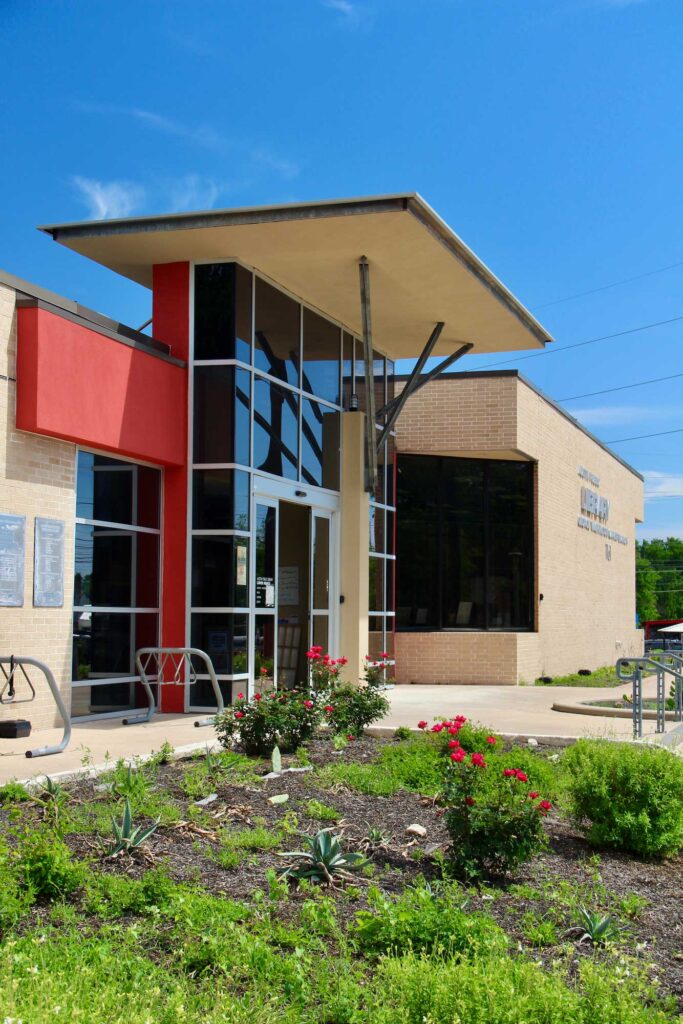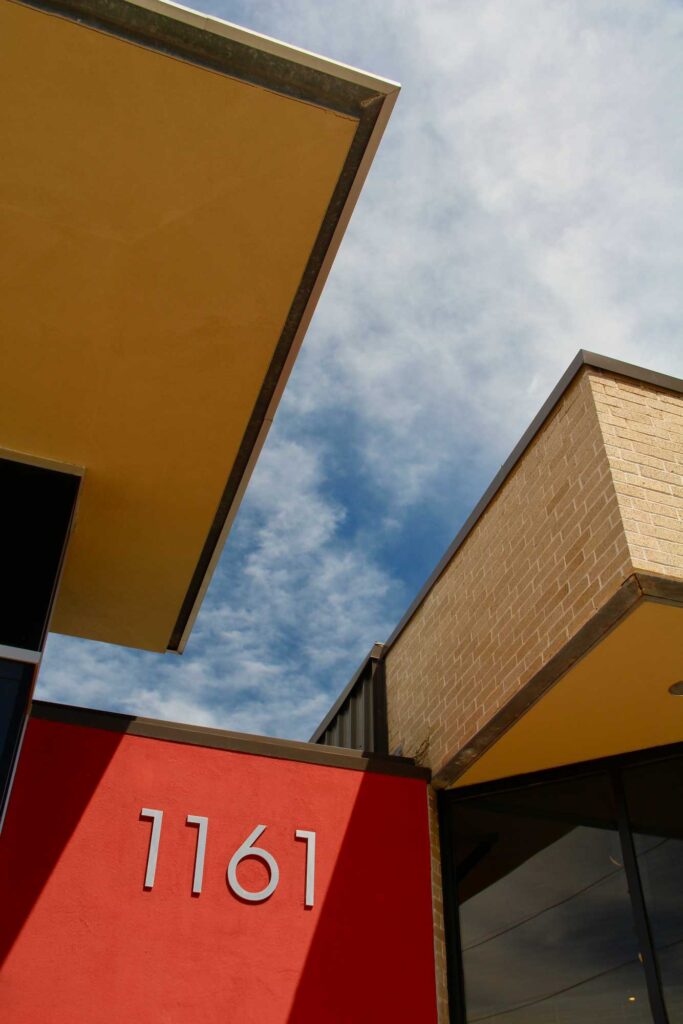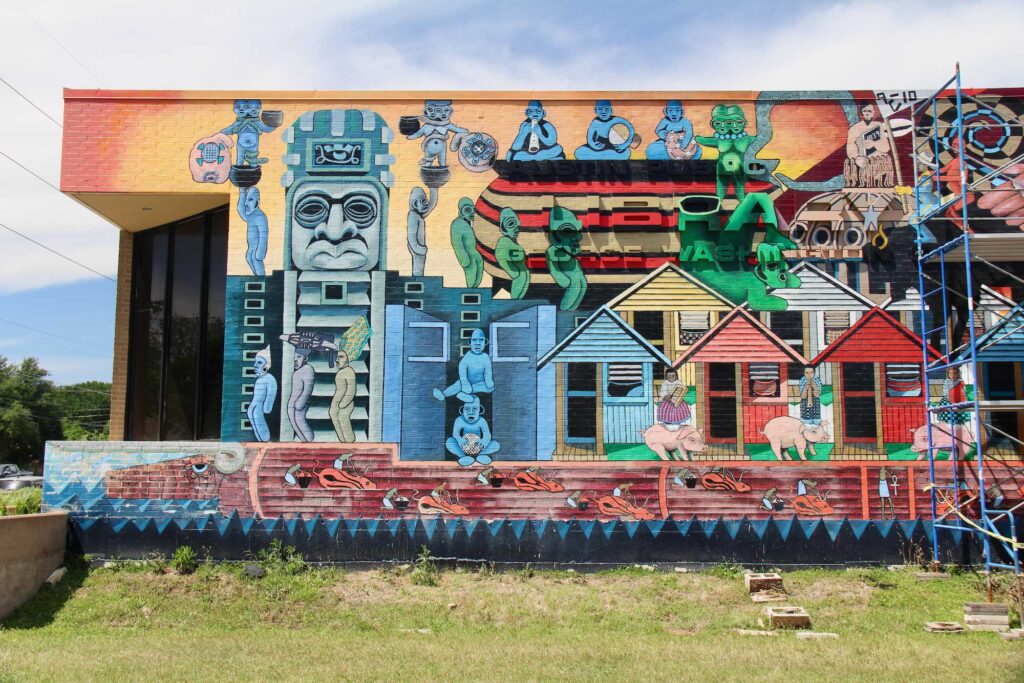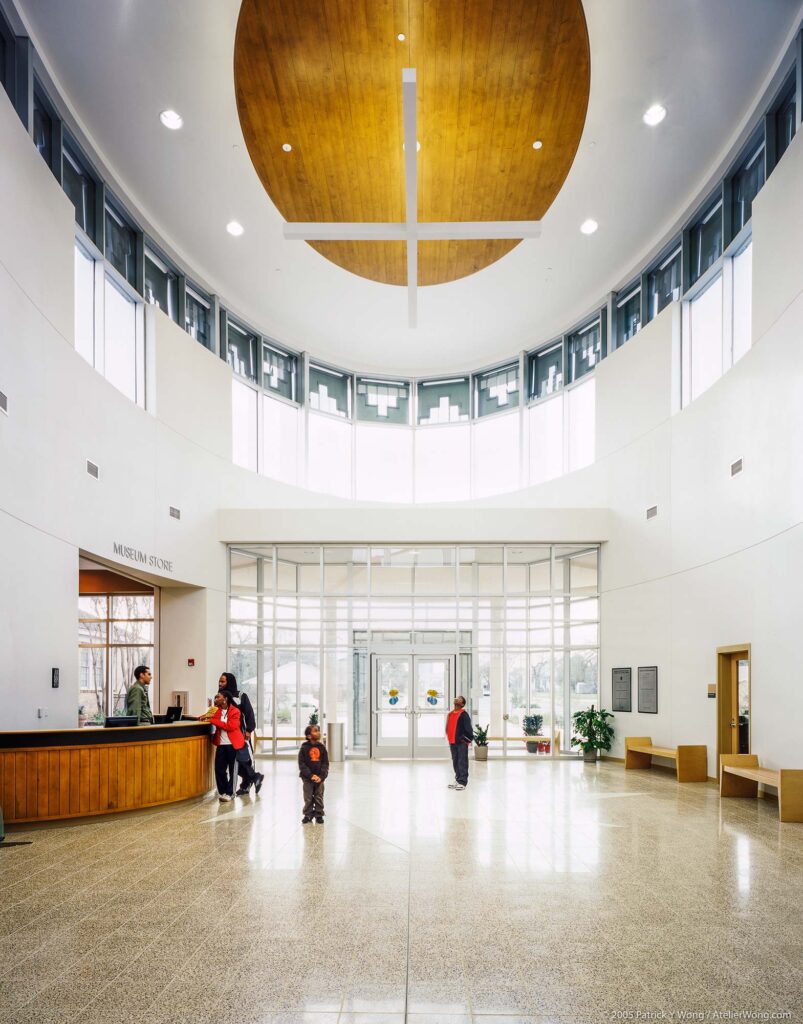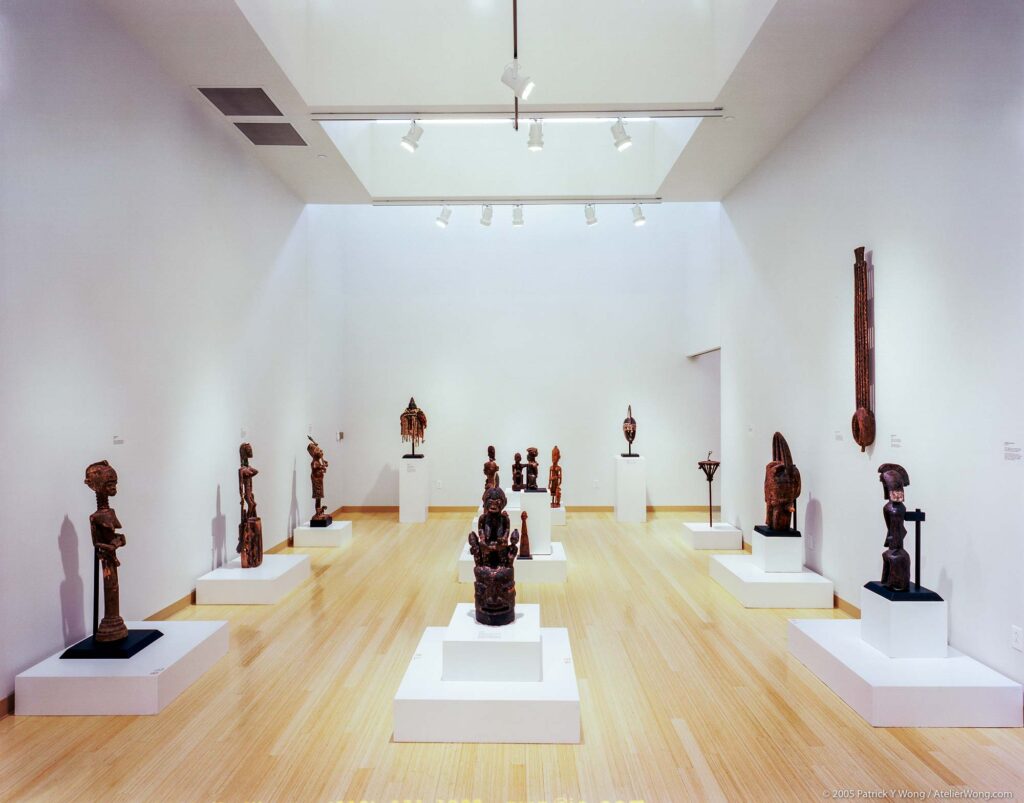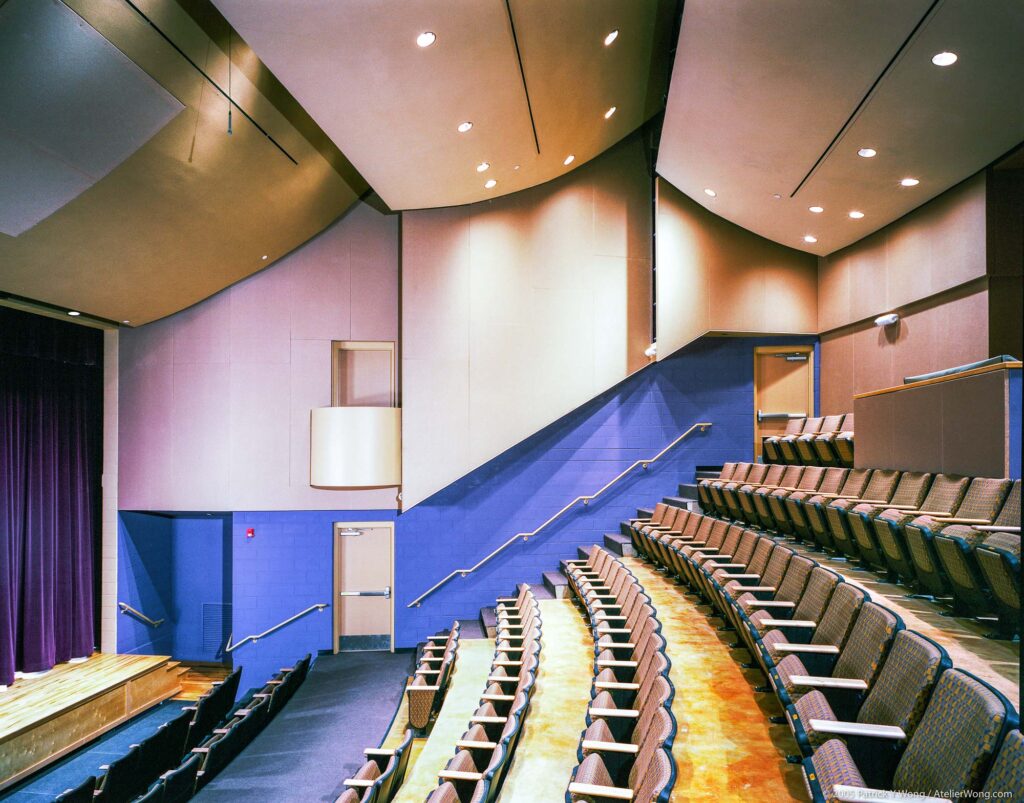The Carver Museum is a key feature of Six Square, Austin’s Black Cultural District. “Six Square” refers to the size, in miles, of the so-called “negro district” created by the City Council’s 1928 Austin City Plan that formalized racial segregation in Austin. The Six Square District includes important historic sites like Huston-Tillotson University (a historically black college first established in 1875); Downs Field (which hosted the Texas Negro League baseball games); Victory Grill (a 1940’s juke joint that hosted acts like Billie Holiday and BB King), and the African American Cultural and Heritage Facility (housed in the historic Dedrick-Hamilton House, once owned by one of the first formerly enslaved people in Austin). Of Six Square’s landmarks, the Carver Museum stands out as both a cultural preserve and a modern community resource.
The Carver Museum that you see today grew out of Austin’s first library. The small Colonial Revival frame structure that now serves as the Genealogy Center was originally constructed in 1926 in downtown Austin. In 1933, a new library was built (now the Austin History Center) and the old building was moved to the current location. It was renovated with a beige ‘Austin Common’ brick veneer and reopened as the segregated branch of the Austin Public Library. In 1947, the branch library was named in honor of Dr. George Washington Carver, an African American agricultural scientist renowned as one of the most important inventors in American history. In 1980, after the completion of the larger, desegregated branch library to the south, this historic facility was reopened as the George Washington Carver Museum and Cultural Center.
Twenty years later, the citizens of Austin voted to expand the facility in a bond election. Prominent African American architect Donna Carter, FAIA, was selected to helm the expansion. Her firm, Carter Design Associates, developed a design that left the historic building intact and created a new structure to the north. Completed in 2005, the freestanding museum building includes archival space, a performing arts venue, studios, classrooms, permanent history exhibits, and rotating art galleries. Its crescent footprint allows the building to snake deferentially behind the historic genealogy center and the library. A circular atrium creates a bright, airy lobby and a connection node for the gallery wings. Additionally, the atrium’s distinctive tower-like form creates a street-level landmark.
Carter Design Associates were early adopters of sustainable design principles, and the Carver Museum is one of the first LEED-certified projects in Austin. The structure features a recycled steel frame, a locally produced masonry façade, and a foundation that contains fly ash (a coal combustion byproduct recycled as the cement in concrete).
During the museum’s design, Carter Design Associates created a vision plan for the site that outlined a further expansion over multiple phases. In June of 2020, the Austin City Council approved plans for the first expansion, which envisions the museum tripling in size to over 90,000 square feet. The expansion will bring a 500-seat theater and enhanced outdoor amenities, including a public plaza and performance pavilion suitable for live events. – Sadi Brewton, AIA
Sustainability Highlights:
- LEED Certified (U.S. Green Building Council)
